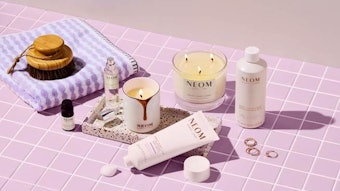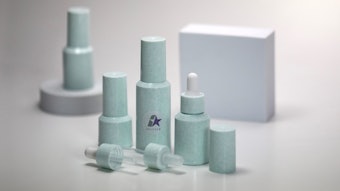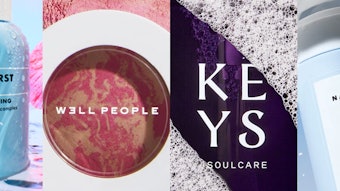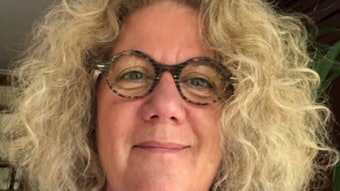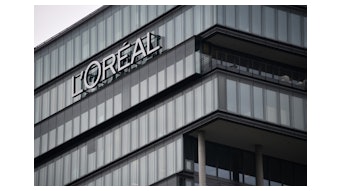- Facial care is expected to account for 86% of the skin care market’s projected $16.3 billion gain.
- North America bounced back in 2011 with healthy growth of almost 4%, with the lion’s share from the premium anti-aging category, which grew by 14% in 2011 to reach $3.3 billion.
- Premium anti-agers, with the strongest growth rates, have benefited from the incorporation of extra benefits such as SPF and continuous use of stem cell innovation to help add value and justify higher prices.
- The growing popularity of anti-aging devices has given rise to a new category within beauty.
- As competition intensifies, new ingredients and technologies establish unique selling points.
- The blurring between categories is a trend set to continue, with skin care benefits incorporated in other categories, such body sprays with moisturizing and skin toning properties.
- As skin care becomes increasingly saturated, personalized and targeted products will become more popular.
The skin care category has been the cornerstone of beauty and personal care for the past 15 years. It even grew during the global recession, adding a further $15 billion between 2007 and 2011 to reach a value of $96.5 billion, according to Euromonitor International. Healthy growth of 4.4% in 2011 is expected to continue, with the category forecasted to see absolute growth of $16.3 billion to 2016. The lion’s share of this added value will come from the category’s star performer, facial care, which is set to account for 86% of the $16.3 billion gain. The other categories in skin care are still fairly small in comparison. Body care grew by a weaker 3.9% in 2011 compared to 4.2% in 2010 to reach $16 billion while hand care posted a healthy 5.6% gain to reach $2.5 billion.
Asia-Pacific Dominates Skin Care Market
Even though Asia-Pacific accounted for a 43% share of total skin care value sales in 2011, it is its unstoppable growth that is the most impressive. Almost 70% of total skin care growth over the next five years will derive from the Asia-Pacific region, equating to $11 billion in real terms.
The importance of the region is reflected in recent product launches. From Chanel and Christian Dior to Crème de la Mer, brands—especially premium ones—have been launching products to cater for the needs of Asian populations. The popularity of brightening/whitening products and BB (blemish balm) creams, which are now widely available in Western Europe and North America, is just one of the trends from Asia-Pacific that has had an impact on the wider skin care market.
North America Pays Any Price for Youthful Skin
The North American region bounced back in 2011 with healthy growth of almost 4%, close to double the 2% gain achieved in 2010, according to Euromonitor International. The lion’s share of this came from the premium anti-aging category, which grew by 14% in 2011 to reach $3.3 billion. Beauty brands have been responding to demand with an array of anti-aging products that don’t simply target wrinkles but are part of an overall anti-aging equation consisting of uneven skin tone, hyperpigmentation, dark spots, dryness, sun damage and expression lines. Multifunctional products that target all the signs of aging better suit the hectic lifestyles of North Americans—as well as provide better value for money, allowing consumers to trade up.
Premium Anti-agers Continue Impressive Growth
Since bouncing back from relatively low 3.8% growth in 2009, premium anti-agers have registered the strongest growth rates in the skin care category. The robust 7.7% increase seen in 2011 is set to continue, with annual value growth of around 7% predicted over the next five years, according to Euromonitor International. China will be the biggest contributor to the $2.7 billion absolute growth predicted by 2016, adding $1.2 billion, followed by the U.S., which will contribute an impressive $425 million.
An increase in unit prices across all regions has helped counteract slackening growth in Western Europe, which, despite the deepening eurozone crisis, still grew by 3%. The incorporation of extra benefits, from SPF and brightening, and the continuous use of stem cell innovation, glycans and omics, all helped add value and justify higher prices.
The Demand for Radiance
The Asia-Pacific region has been pivotal in setting trends in skin care. The recent growth in brightening products, whether incorporated into anti-agers or on their own, is clear evidence of the influence of the region on the category.
The demand for brighter/more radiant skin has now arrived in Western Europe and North America, with the 2010 launch of Clinique’s Even Better Clinical Dark Spot Corrector in the U.S., sparking a craze. Asia-Pacific and the Middle East outperformed the global growth rate of 9.4% for whitening anti-agers with double-digit figures, while the struggling Western European and North American markets still registered healthy growth rates of 7% and 9%, respectively. Chanel’s Le Blanc, L’Oréal’s Youth Code and Shiseido’s White Lucent are among the brands that have launched lines to cater for this demand.
Demand Rises for Holistic Skin Care
Fueled by consumers’ lack of time and the need to offer value for money, beauty brands have been launching more holistic products. SPF, hydrating, anti-wrinkle and evening out skin tone are just a few of the features now present in many skin care products.
The popularity of BB creams is set to continue, particularly as brands add more shades to their ranges. The launch of Lab Series’ first BB cream for men and Sleek MakeUp Be Beautiful BB Cream for dark skin in the U.K. are an indication of the increasing diversification of the category, and it is only a matter of time before its known if such products cannibalize sales of tinted moisturizers or even eliminate them altogether.
Specialization and Sophisticated Technology
The impressive growth of premium anti-agers has partly been fueled by the increasing number of launches in specialized serums, as well as creams for specific skin care issues. Etat Pur, for example, offers a range of individual doses of active ingredients to be used together with a cream to target a specific skin care issue such as pigmentation, redness or deep wrinkles. YSL’s Youth Liberator, which uses glycobiology; Lancôme’s Absolue L’Extrait with more than two million rose stem cells; and La Prairie’s Skin Caviar Liquid Lift, which uses a glucose-based polymer, are just a few of the recent premium high-tech launches in serums.
Furthermore, Clarisonic anti-aging devices and their growing popularity, which has been fueled by a high-profile media presence and attention from bloggers, have given rise to a new category within beauty.
Search for Unique Ingredients
As the competition between brands intensifies, companies are looking for new ingredients and technologies to establish a unique selling point. A growing trend, currently present in many other beauty and personal care categories, is the use of natural ingredients. Although this used to be a niche for companies such as Skin Nutrition, Korres and Lush among others, it is now becoming more mainstream, with brands such as Garnier, L’Oréal and Christian Dior dipping their toes into the world of natural and nature-inspired ingredients.
The new range from Christian Dior, Diorsnow, uses one of the more recent nature-inspired ingredients, Icelandic glacial water. The water’s higher purity and mineral balance is said to improve efficacy. As the product range also offers whitening, it is no surprise it launched first in Asia. Icelandic glacial water, known to be pollution-free, is also used by some consumers in Asia (despite its high price) to wash their faces or as a toner. Its popularity has already started to spread to North America and Western Europe.
Beauty Categories Blurring
As companies keep searching for new ways to add value to their products, more offerings with multiple targets are hitting the market. The most popular trend is the incorporation of SPF in skin care. As sun damage is believed to be the main cause of visible aging in the form of hyperpigmentation and wrinkling, it is essential to use sun protection on a daily basis. It is thus more efficient to use a moisturizer with both UVB and UVA protection to prevent sunburn and aging damage, respectively.
In addition, the latest research from SkinCeuticals shows protecting one’s skin from UVA and UVB is not enough, as sunlight is mainly composed of infrared rays that can penetrate the skin and damage collagen, causing the skin to age. This has led to a rise in popularity of products that contain antioxidants, from serums (which are perceived to be the most efficient moisturizers) and anti-agers to sunscreens.
Furthermore, skin care benefits have also been incorporated in other categories, such as deodorants. This rising trend is seen mostly in the form of body sprays with moisturizing or even skin toning properties. Lancôme’s Aroma Tonic is the latest launch being promoted as a new body treatment spray designed to tone and moisturize the skin with a high concentration of essential oils. Other launches have come in the premium category, such as Chanel’s Eau Tendre Sheer Moisture Mist, which also works as a light scent to fragrance the skin as well as using essential oils to nourish the skin. Silky Body Oil from Valentina uses macadamia and sweet almond oils as well as vitamin E to moisturize, treat and produce radiant skin. These launches further demonstrate the blurring between categories is a trend set to continue.
Bespoke Skin Care: One Way Forward?
As skin care becomes increasingly saturated, companies will keep trying to find new ingredients, new consumer groups and new technologies to differentiate their offerings. With an increasing emphasis on individuality, combined with increasing demand for personalization, technologies such as Genalysis from U.K.-based geneOnyx, which uses a saliva sample from a cotton bud to analyze a person’s DNA so as to select the best skin care ingredients for that person, will become more popular. Bespoke fragrances are already growing in popularity for super premium brands, and, with the skin care market forecast to reach $113 billion in absolute terms by 2016—more than double fragrances’ forecast value—super premium skin care brands could look at bespoke offerings as their future selling point.
Nicole Tyrimou is a Euromonitor International beauty and personal care analyst.



